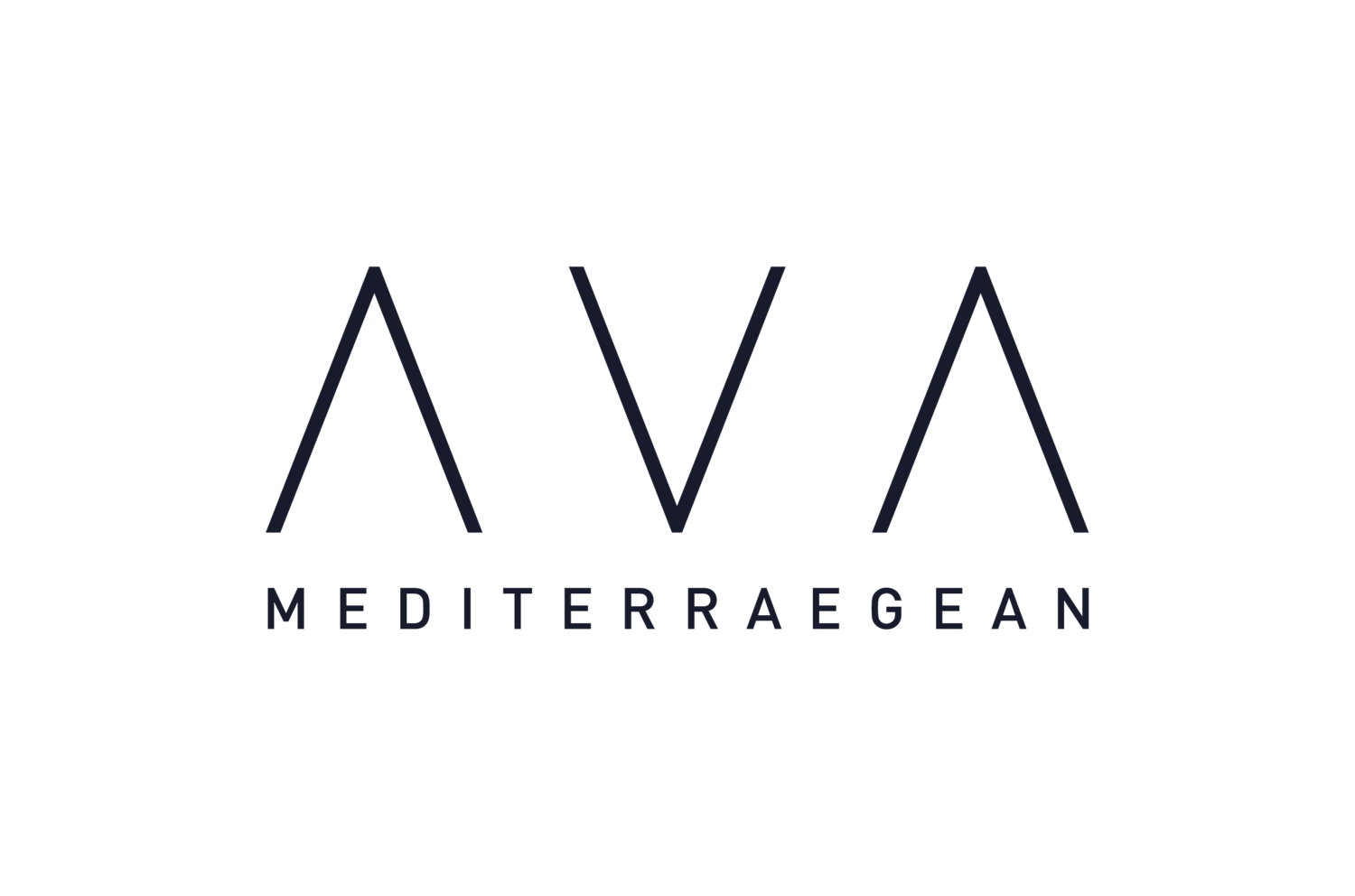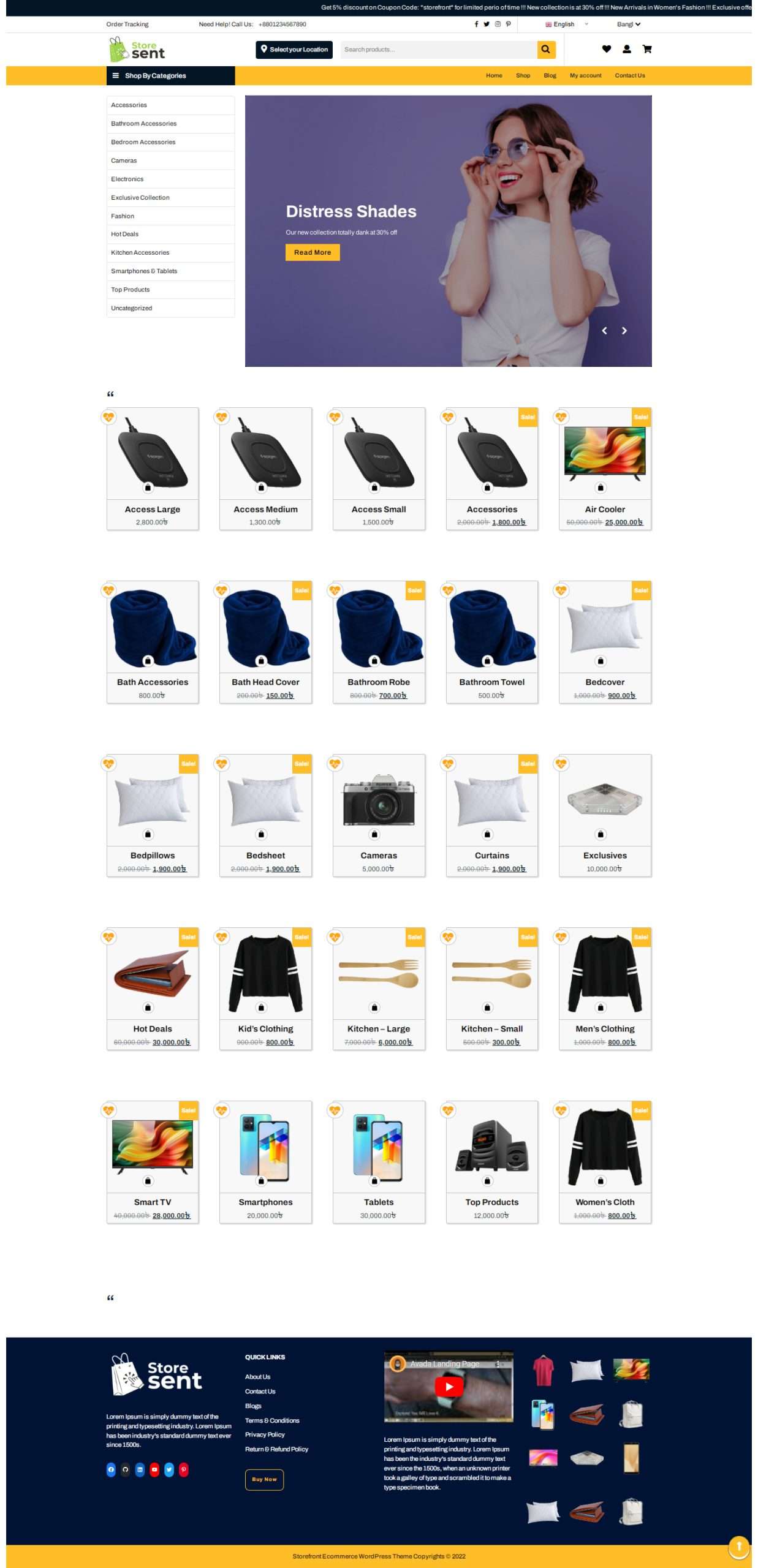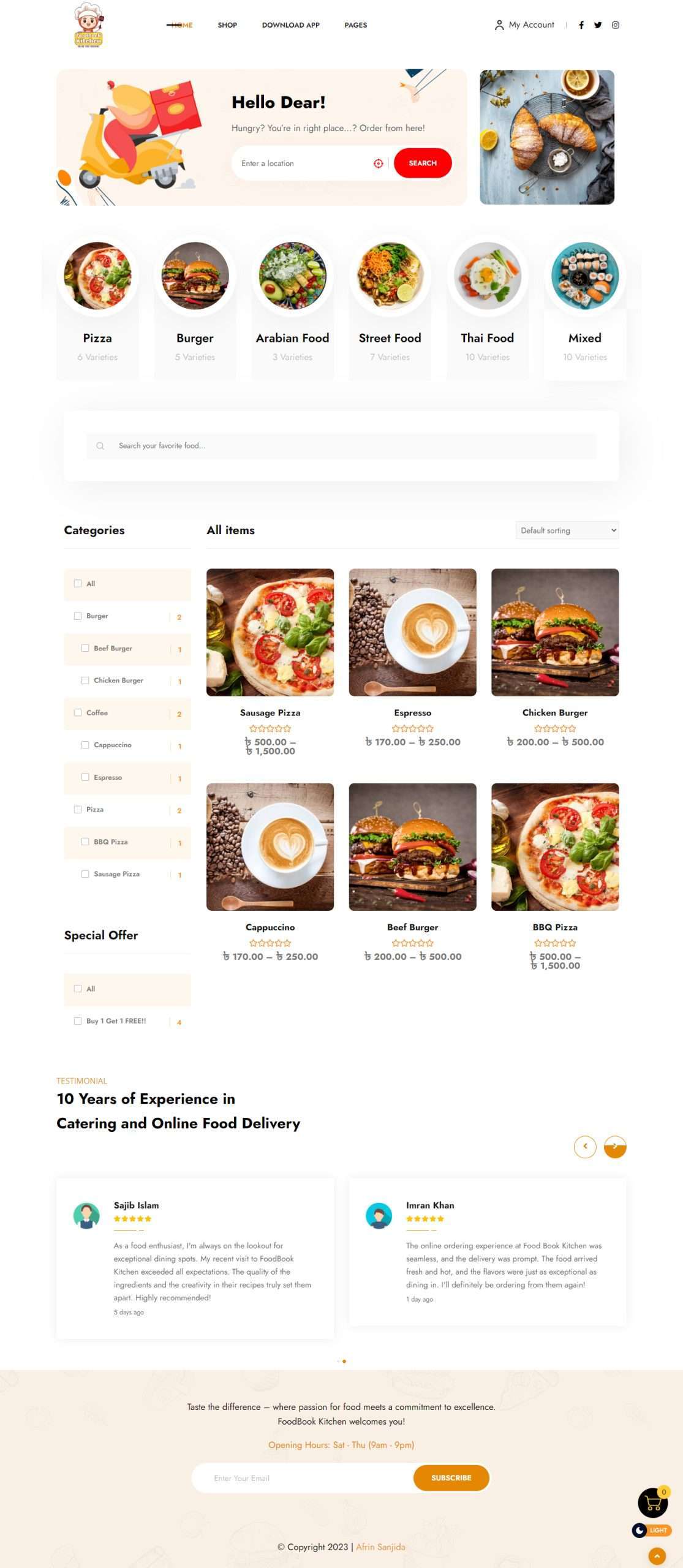ELEVATE YOUR
ONLINE
PRESENCE
WITH
AFRIN
SANJIDA
let's make
something
truly
remarkable
Afrin Sanjida specializes in responsive WordPress Web Design and compelling Content Creation. With a focus on enhancing online presence and engaging audiences, she transforms digital visions into reality.
Crafting Unique Experiences
With Creativity
Hey there! I’m Afrin, a skilled web designer and content writer with 3+ years of experience. I specialize in transforming various file formats like PSD and Figma into stunning, responsive websites and creating Elementor-based landing pages, blogs, portfolios, and corporate sites. I also provide engaging content writing services to enhance online visibility.
With a keen eye for detail and a passion for excellence, I ensure every project delivers exceptional results.
what I bring
to the
table
I offer custom web design and engaging content writing services that help brands stand out. From building responsive WordPress sites to crafting compelling copy, I create digital experiences that connect, convert, and leave a lasting impact.
Landing Page Design
E-commerce Website
Speed Optimization
Content Writing
Trusted By






































web design projects
with
real impact
Each of my projects carries a unique story that highlights not only my design skills but also reflects my deep passion for the work I do.
What Clients Say


Afrin was a pleasure to work with from start to finish. She quickly understood my requirements and delivered a clean, responsive website. Her attention to detail and quick turnaround exceeded my expectations. Highly recommended! I’ll definitely work with her again.
Kersley Peters AuthorCanada


We had a complex layout in mind, and Afrin brought it to life with creativity and precision. She was professional, responsive, and delivered a smooth user experience. We're thrilled with the result!
Mei Xuan Tan Co-founder of Plate Perfection RestaurantSingapore

Blog Buzz

1. Speed: From Idea to Website in Hours, Not Weeks
Time is money. Traditional websites often take weeks (sometimes months) to build, especially when starting from scratch. With no-code and CMS platforms, you can:- Use pre-designed templates
- Drag-and-drop elements
- Publish instantly
Real-world Example:
A startup looking to test an MVP (Minimum Viable Product) can spin up a landing page in a day, capture emails, and start validating their idea immediately—no developers required.2. Cost-Effective: Build Smart, Spend Less
Hiring a professional developer or agency can be costly, especially for small businesses or entrepreneurs just starting out. No-code platforms allow you to:- Avoid high development fees
- Pay monthly or yearly subscription fees
- Only upgrade when needed
Tip:
Use free tools like Astra (WordPress theme), Elementor (page builder), or HubSpot CMS to cut down initial costs even further.3. Flexibility: Design It Your Way
Unlike traditional coded websites that often require back-and-forth changes with developers, CMS and no-code tools put the creative control in your hands. Whether you’re a designer or a business owner with zero coding skills, you can:- Choose from a wide range of templates
- Customize fonts, colors, layouts
- Add animations, galleries, or dynamic content with a few clicks
4. No Technical Background? No Problem!
The biggest selling point of no-code and CMS platforms is accessibility. You don’t need to know HTML, CSS, or JavaScript. These tools are built for users who want to focus on content, marketing, and business—without worrying about technical complexities.For example:- WordPress’s Gutenberg editor offers block-based editing.
- Webflow visualizes HTML/CSS in a designer-friendly interface.
- Wix and Squarespace make it feel like designing a poster with Canva.
Bonus:
If you ever do want to add custom code, most platforms still allow advanced users to tweak as needed.5. Built-in SEO & Marketing Tools
Visibility is everything online. CMS platforms like WordPress and no-code tools like Wix and Webflow often come with built-in SEO tools or integrate easily with third-party tools like Yoast SEO, Rank Math, or Google Analytics.You can:- Edit meta titles and descriptions
- Optimize images for faster loading
- Generate sitemaps automatically
- Integrate with email marketing tools like Mailchimp or ConvertKit
6. Ideal for Freelancers and Agencies
For freelancers and web design agencies, CMS and no-code platforms can be a game-changer:- Scale your projects: Handle more clients in less time.
- Faster revisions: Clients can make small edits themselves.
- Easier collaboration: Built-in roles and permissions make teamwork smoother.
7. Scalability: Start Small, Grow Big
No-code doesn’t mean no-growth. These platforms aren’t just for beginners. Many enterprise-level websites are powered by WordPress, Webflow, or Shopify. You can start with a basic site and scale up as your traffic or product catalog grows.Some platforms even allow integration with APIs, advanced analytics, and third-party tools—giving you the best of both simplicity and power.8. Security & Updates Made Easy
With traditional websites, you’re often responsible for manual updates and patches. One missed update and your site could become a security risk.But with CMS and no-code platforms:- Security patches are rolled out automatically
- Hosting providers offer firewalls and SSL
- Plugins and themes notify you when updates are needed
9. Mobile-Optimized by Default
Responsive design is no longer optional—it’s mandatory. Luckily, most CMS and no-code tools now include mobile optimization by default. You can:- Preview mobile and tablet layouts
- Adjust padding, font sizes, and layouts per device
- Ensure your site looks great everywhere
10. Easy Content Management & Updates
Once your site is live, it doesn’t stop there. You’ll need to update blogs, products, images, or testimonials. CMS platforms make this incredibly easy:- Update content through user-friendly dashboards
- Add new blog posts or pages in minutes
- No risk of breaking the layout or backend
Final Thoughts: Is No-Code the Future?
Not every project needs a developer. In fact, most websites today don’t – at least not for the initial version. No-code and CMS-based websites democratize access to the web, empowering creators, marketers, and entrepreneurs to take control of their online presence.That doesn’t mean developers are obsolete. Complex apps, custom integrations, or performance-intensive websites still require code. But for 90% of the web, no-code is enough—and it’s getting smarter every day.Top Benefits of No-Code & CMS Websites
| Feature | Benefit |
| Speed | Launch in hours, not weeks |
| Cost | Affordable setup and scaling |
| Flexibility | Full design control, no code needed |
| Usability | Beginner-friendly platforms |
| SEO | Built-in tools for visibility |
| Growth | Scalable from small to enterprise |
| Security | Automatic updates & safer hosting |
| Mobile Ready | Responsive design by default |
| Editable | Easy to manage and update content |
| Ideal for Freelancers | Faster workflow, client-friendly |
Ready to Build?
Whether you’re a solopreneur starting your first business, a blogger ready to go live, or a web designer managing clients – no-code and CMS platforms open the door to fast, flexible, and future-ready web development.So go ahead – click, drag, launch. Your next big idea is just a few blocks away.
The Current AI Landscape
Presently the AI sector functions as a competitive arena that includes well-established enterprises against upcoming startup firms fighting for supremacy. Research projections indicate the AI market will generate $1.5 trillion during the period from 2030 until 2030. Artificial intelligence startups seize public attention through pioneering innovations in natural language processing and autonomous systems besides computer vision even though big tech firms have spent billions to develop AI.The Strengths of Big Tech in AI
The dominant position in AI industry belongs to big tech firms due to their multiple advantageous factors.- Massive database resources enable Google along with Facebook to train their advanced AI systems more effectively because of their large data holdings.
- Big tech organizations benefit from abundant financial resources that enables them to buy both new AI startup ventures and conduct extensive research development.
- Big technology corporations maintain ownership of advanced AI infrastructure such as GPUs along with cloud computing platforms.
- Their established market presence along with strong customer trust allows them to gain superiority when developing and selling AI products.
The Strengths of AI Startups
AI startups own distinct abilities which help them resist the domination of big tech organizations.- New business concepts along with quick response times result from startup independence from corporate administration.
- AI startups frequently select their expertise in particular areas where major technology companies usually display neglect.
- Startups provide individualized solutions for particular sectors since they don’t follow corporate strategies to create general-purpose AI systems.
- AI startups manage to build solutions at much lower expense points compared to what big tech organizations would spend.
The Challenges Faced by AI Startups
AI startups encounter multiple obstacles while challenging established corporations because of their limited strengths in the field1. Funding and Resources
Although venture capital funding for AI startups continues to grow they lack sufficient funding sources compared to tech industry leaders. Future success for most promising startup ventures becomes elusive because of insufficient funding.2. Access to Quality Data
Startups typically encounter difficulties when trying to acquire extensive databases of high-quality information that serve as the foundation for AI systems. Startups which lack their companies’ decades of user data need to partner with other companies or use public datasets for their AI development.3. Talent Acquisition
AI experts have high demand so big tech companies provide generous compensation packages together with desirable benefits. Startup enterprises need to develop novel approaches for drawing and keeping skilled personnel.4. Market Penetration
The market entry of AI startup products that successfully develop innovative products still faces major hurdles when trying to reach customers because of competition from dominant industry players.How AI Startups Can Compete with Big Tech
1. Leveraging Open-Source AI
Startup firms are turning successful due to open-source development movements. Startup businesses leverage TensorFlow and PyTorch platform capabilities to develop complex AI models through prebuilt foundations that save them from full architectural development.2. Forming Strategic Partnerships
AI startups should establish partnerships between enterprises and universities along with research institutions to obtain needed data resources and funding as well as specialized expertise. Several AI startups maintain business relationships with major cloud service providers AWS and Azure for acquiring computational capability.3. Focusing on Niche Markets
Startups working with Artificial Intelligence should launch their ventures by focusing on specific market segments rather than challenging major tech companies so they can become specialized market leaders.4. Prioritizing Ethical AI Development
The growing interest in artificial intelligence ethics brings advantages to startups which develop systems with fairness built in besides promoting transparency throughout their practices.The following analysis examines two startup enterprises as they ventured into disrupting the business framework of major technology companies.Multiple entities using AI technologies have been able to disrupt established big business leaders. Some prime examples of such startups include:1. OpenAI
OpenAI began as a nonprofit research organization to create the influential AI models and subsequently developed ChatGPT. Although Microsoft provides support to the organization it maintains its own operational autonomy while challenging DeepMind’s initiatives at Google.2. Stability AI
Through its startup development Stable Diffusion emerged as a model which matched the(text-to-image models) capabilities of Google and OpenAI. Charge of the OpenEi startup showed that AI disruptive businesses could face big tech companies in innovation.3. Hugging Face
Hugging Face preserves an open-source AI model database through which it opposes AI frameworks operated by Google and Facebook. AI researchers along with developers select this framework because of its collaborative system.The Future of AI: A Balanced Ecosystem?
The AI industry is unlikely to be dominated entirely by big tech or startups. Instead, a balanced ecosystem may emerge where:- Big tech firms continue to develop large-scale AI models and infrastructure.
- AI startups drive specialized innovation and ethical AI development.
- Collaboration between big tech, startups, and academia leads to groundbreaking advancements.
- With regulatory scrutiny increasing on big tech companies, governments may implement policies to ensure fair competition, providing more opportunities for startups to thrive.

Has This Dilemma Ever Been Solved Previously by Anyone?
Philosophers have been fascinated by the paradox of intolerance for many years; it dates back to Karl Popper’s observations in 1945. It implies that a society will ultimately collapse if it is continuously accepting of everyone, including the intolerable. According to Popper, unrestricted tolerance could foster the emergence of forces like authoritarian or radical ideologies that would eradicate tolerance. Therefore, preserving an open and free society becomes vital by not tolerating those who seek to restrict others’ freedoms and rights to keep it that way. Tolerance and freedom are synonymous. The first step in creating a democratic society is tolerating differences in ideas, opinions, and values. Acknowledging the worth of every individual enables us to grow as individuals. But is it all okay to accept any concept or value, including hate speech and intolerance? The crucial lesson Karl Popper imparted to us is that – “If we want a tolerant society, we must be intolerant of intolerance.”Historical Instances of Societal Collapse Due To Uncontrolled Tolerance
Unchecked tolerance can be just as catastrophic as a world war. Don’t believe it? Let’s examine the following historical examples:1. Weimar Republic (1919-1933) and the Rise of Nazi Germany
After World War I, the Weimar Republic in Germany was a liberal government. Then later it embraced strong political groups such as the Nazi Party and Communists. The government allowed even more radical groups to go against Adolf Hitler’s Nazi Party so that there would be no civil conflict in the nation. The Nazis took advantage of this freedom to disseminate their own racist, authoritarian propaganda. It resulted in the collapse of democratic government, the Second World War, and the Holocaust. This indicates the freedom of speech that initially paved the path for Nazism was a kind of freedom with a cost.2. The Fall of the Roman Empire (5th Century AD)
The Roman Empire suffered from various crises: corrupt politicians, weak economic systems, and external armies attacking the frontiers. The ruling class turned a blind eye to these problems, and this was the reason for moral decay and political instability. Between the inability to counter internal corruption and acceptance of external threats, such as the Visigoths, the empire crumbled finally by the fifth century.3. Appeasement Policy and World War II (1930s)
In answer to Nazi Germany’s aggressive growth in the 1930s, European countries, especially France and Britain, used policies called “appeasement.” They didn’t fight against Hitler’s violations of the Treaty of Versailles; instead, they let him re-arm and expand his territory. The Munich Agreement of 1938 allowed Germany to take over Czechoslovakia without any problems. When Hitler attacked Poland in 1939, this approach made Nazi Germany stronger and helped start World War II. The world learned that hostile behavior can help authoritarian governments win support, which can lead to big wars like Nazi Germany’s defeat.4. The Rwandan Genocide (1994)
For years, the Rwandan government and international community have allowed hostilities to escalate between the Hutu and Tutsi ethnic groups. The UN knew the situation was deteriorating but decided to sit on the sidelines. The Rwandan government tolerated propaganda and statements against the Tutsi minority that were racist. Hundreds of thousands of Tutsis and moderate Hutus were murdered in just under 100 days between April and July 1994 in what was one of the deadliest genocides of recent history. It was a consequence of enabling hate speech and propaganda.5. The Collapse of Yugoslavia (1990s)
Yugoslavia had some of the richest ethnic and religious diversity and late in the 20th century, nationalists inside the nation began to come to power. Unable to resolve these disparities, the Yugoslav government fostered nationalist groups and ethnic nationalism. It ended up causing the Yugoslav Wars in the 1990´s, bringing major ethnic cleansing, and the massacre at Srebrenica. This conflict also broke Yugoslavia into nations such as Bosnia and Herzegovina, Croatia, Serbia, Montenegro and others whilst showcasing the dangers of tolerant, divisive ideas and extreme nationalism. If destructive practices remain unchecked, history warns us that society will collapse and civilization will break. Tolerance of corruption damaged the old Roman Empire, and the Nazi government was the formation of openly welcomed revolutionary parties. After the end of World War II, appeasement of Britain and France led to the rapid growth of Nazi Germany. The 1994 Rwandan genocide showed what can happen when hate speech goes unchallenged. This triggered ethnic clashes and the breakup of Yugoslavia, with unresolved nationalist feelings. All these occurrences serve as good examples to illustrate the importance of balancing between tolerance and awareness.Modern Day Relevance: The Rise of Populism and Far-Right Movements
With the rise of far-right movements and populist leaders in the world today, the scary lesson it brings about the limits of unchecked open-mindedness has never been clearer. Just like the times before, political extremism, xenophobia, authoritarian tendencies, etc., are on the rise throughout the world, and states are allowing extremist ideas to spread.In a speech, former Brazilian president Jair Bolsonaro talked about the risks of bias in public service. He did this to show the paradox of tolerance in the modern world. He used violence and exclusion to get things done in a society that was already divided. It demonstrated the need for concrete action in combating intolerance, like legislation, the promotion of deliberative debate, and opposition to neo-fascist mobilization. The spreading of tolerance can turn people nationalists and threaten the rights of the people. It can also risk the state and could unstable entire political orders.Only a free society can grant its people their basic rights, so modern states have to find this line between free speech and the need to stand against ideologies that threaten democracy and basic human rights.How to Set the Boundaries between Beneficial Toleration and Harmful Intolerance?
A community might be rightfully proud to suffer the intolerable for the sake of liberty, but that may ultimately empower dangerous forces that threaten the ideals of the society. Could you connect this to Bangladesh’s current circumstances? Bangladesh saw a great deal of public instability in 2024 as a result of years of tolerating corrupt government and restrictions on liberties. Boiling frustration turned into demonstrations calling for election change, freedom, and transparency. Following a period of autocratic administration under the appearance of democracy, society continued to be “tolerant” of the exploitative practices of the government. But on August 5, 2024, this tolerance finally broke, causing the government’s chief to leave the nation. What’s going on now? The society that was formerly “tolerant” has turned “intolerant,” demanding the freedoms and rights that have been denied for more than 15 years. Every day, a variety of groups assemble to voice their demands while holding placards. Neither the growing intolerance of today nor those fifteen years of tolerance were healthy.Solving the Intolerance Paradox: The Personal and Societal Context
The paradox of tolerance says we must tolerate everything but intolerance—and it takes careful thinking to figure out how this plays out in harsh social and personal environments. A few solutions to tackle this issue are:1. Fostering Critical Thinking:
We must learn to differentiate between healthy arguments and harsh intolerance, which will take some critical thinking. Refuse to be emotionally manipulated and view information objectively. This will help people educate themselves by teaching them about propaganda and logical fallacies. Programmes in active listening and media literacy also go a long way in breaking across different communities and ending the spread of unacceptable ideas.2. Policies to Restrict the Spread of Intolerant Ideologies:
Nations need to have laws to ensure freedom of expression. Countries can set punishments for hate speech to ensure that free speech is not compromised. For example, there are hate speech laws in place across European countries. Through the right use of technology, businesses can reduce hate by promoting accountability and transparency. It can also prevent important messages from falling into the wrong hands.3. Education as a Tool for Promoting Mutual Respect and Understanding:
Education is an essential tool in the fight against intolerance as it fosters diversity, knowledge of discrimination, and compassion among people. It also helps in giving children a chance to see other countries and viewpoints. Human rights, conflict resolution, and political participation can be taught in national education programs. This can prevent intolerance and help people connect.4. Encouraging Open Communication and Participation:
Finding ways to engage in productive conversations can assist in relieving tension and fostering mutual understanding. Patients in close relationships should have conversations to clear misunderstandings or biases. Initiatives such as open meetings and intercultural talks may bring people and communities together, leading to greater social well-being.We can say, to solve the tolerance paradox, more systemic changes are needed along with the efforts of individual people. Freedom may be safeguarded, and discrimination can be fought by critical thinking, education, open speech, and usuful policies.Everything must be tolerated except Intolerance – The Real Struggle
The paradox of tolerance is a real challenge not only because we need to know when to stop tolerating the intolerable but also to build a society that understands why and how people become intolerant. This is where we need to shift our focus, understanding these relationships. The answer to tolerance is not to set limits but to cultivate a caring, more ideologically resilient culture.To conclude, the paradox is more than merely about intolerance. It is about how we know what it means to share life, not despite our differences, but because of our differences.The Wrap Up
We have to take part in the solution to the paradox of tolerance in our social and personal lives. We need to challenge our perspectives, work against our biases, and cultivate a culture of compassion, empathy, and respect. Society should denounce racism and endorse laws protecting inclusion and free speech. We can do our part by fighting against injustice and building an atmosphere where both compassion and respect exist. No matter how little you do, it may still have an impact.Still Curious?
I primarily focus on creating responsive, user-friendly designs that align with the brand’s identity while ensuring fast performance and SEO best practices.
My approach combines clean, user-centric design with strong performance and SEO optimization, ensuring each site not only looks great but also functions effectively.
I understand the unique challenges startups face. That’s why I create custom, user-focused websites that are not only visually appealing but also intuitive and goal-driven. I refine every detail to ensure your site meets real user needs and supports business growth. Leave the design stress to Afrin – let’s build a website your customers will love.
I determine the timeline based on the project’s scope, design complexity, required features, and client feedback cycles, ensuring a realistic and efficient delivery schedule.
The cost of a web project depends on factors like the number of pages, design complexity, required features (e.g., e-commerce, blog, custom forms), and whether ongoing maintenance is needed. I usually provide a custom quote after understanding the full scope.













This is my second time working with Afrin, and she never disappoints. Not only did she build a fast and mobile-friendly site for my business, but she also helped with SEO optimization and continues to provide support when I need updates. I’m very happy with her work!
Markus Jason Emmanuel Entrepreneur, Organizer & Business EnthusiastToronto, Canada